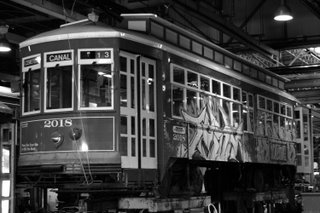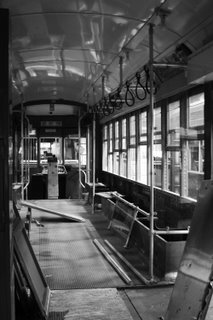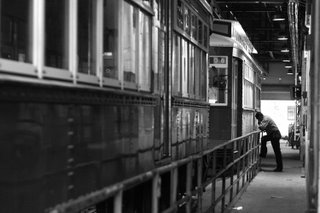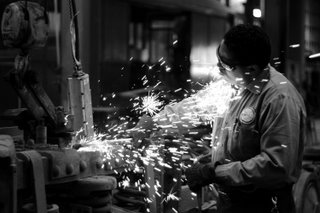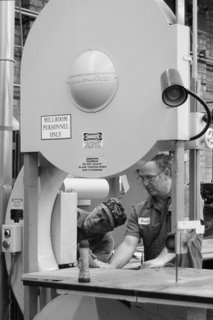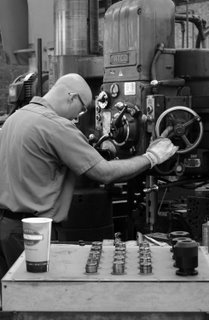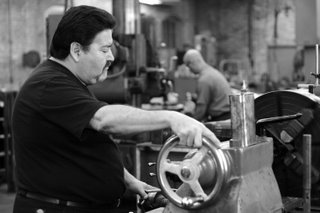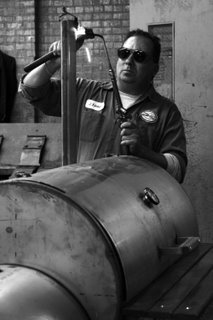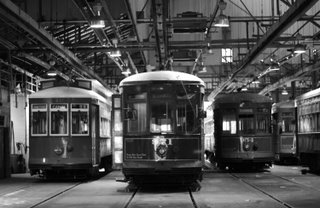| T H E A R T P A R T Y |
| a b o u t ! ~ a r t ! ~ i s s u e s ! ~ p r o p a g a n d a ! ~ j o i n ! ~ e v e n t s ! ~ c o n t a c t ! |
|
MOTION THOUGHTS Among these pages you are invited to explore the work of Art Party members. We hope you feel a little more inspired and enlightened by what you find. To submit work, join the party! Below, you'll find the most recent work added to our collection.
Thursday, December 21, 2006Carrollton Transit Stationwords and photography by Cadet Tom, Autumn 2006 Hurricane Katrina threw the New Orleans Regional Transit Authority and its streetcar system into disarray. Tracks and electric lines were torn apart, streetcars were flooded and rendered unusable, and a dispersed population and payroll left the RTA in a dreadful financial position. They are only now slowly getting back on their feet, and their most famous icon—the New Orleans streetcar—is making its return slowly but surely. The Carrollton Transit Station in the Carrollton neighborhood of Uptown is the epicenter of its revitalization. Dozens of streetcars from all of the New Orleans lines fill the storage floor and general assembly floor in the station. Some, most of the green St. Charles streetcars for example, are in great condition. Others—the 24 red Canal streetcars and six of the seven Riverfront streetcars—have varying amounts of damage. The Canal Station flooded during the storm, putting the streetcars inside out of use. They were eventually taken to the Carrollton Station. They now lie waiting. Some cars are entirely gutted, others still full of scrap and trash from the flood. Still others are in better condition, although occasionally vandalized. One Canal streetcar has been graffiti tagged with the words “GET ME BACK ONLINE.” The artist might not have realized that he was not helping in realizing his request. Another is entirely covered on one side with more intricate graffiti. These are all remnants of Katrina’s troublesome effects. The RTA is working on remedying all of these troubles and getting everything back in working order. They are depending on their skilled engineers and well-equipped facilities to reach this end. The engineers of the Carrollton Station are especially important. Many have been working on New Orleans streetcars for over 25 years. They are highly skilled at their work, which covers anything a streetcar could possibly need. There are carpenters, upholsterers, welders, mechanical engineers, painters, metal workers, electricians, and machinists. Raymond Perossier, a man who has done it all, busies himself with all aspects of streetcar maintenance at the station. He was trained by the last man whom he considered “knew everything” about the streetcars. Perossier is an integral employee at the station. The facilities at the station are almost equally important. They range from tools used on the original streetcars that Perossier says are “older than your grandfather’s father,” to computerized machines that can complete a job that used to take a week in a matter of hours, to hydraulic lifts that can push up an entire streetcar ten feet into the air. Thanks to a thorough modernization in the 1990s, just about anything can be done with ease. Any part required for a streetcar can be manufactured right in the station. Several shops, including an electric shop, a millshop, an upholstery shop, a welding shop, and a metal shop are astride the storage floor and general assembly floor. There are also two painting chambers (called “spray booths”) where painters can paint anything from a chair to an entire streetcar.
Workers already had a lot on their hands before Katrina. There is an ongoing restoration project for the Saint Charles line, the home of which is the Carrollton Station. Day after day, workers have been taking apart and putting together the Saint Charles cars again. Right now, there is a special emphasis on the trucks of the cars—the assembly that contains the massive engines and wheels. Work takes place on the general assembly floor with welding and construction, and in machine shops with individualized attention to each component of the truck. Everyone is hard at work at the station. Many are occupied with projects for the restoration of the Saint Charles streetcars, including Larry McKenzie and Allen Santee who have been working with the trucks on the general assembly floor, and Anthony Maggio and Lenny Reyes in the machine shop, who are working on perfecting individual components. In the spray booths, Mr. Stampley and Eric Blasch are painting everything that needs to be painted in that trademark green or red coat.
There are also several independent projects happening. In the metal shop, James Kimble has been making barbeques from scratch for the company picnic; a humorous reprieve from the serious work elsewhere at the station. “It’s actually a pain the ass,” he says. Nevertheless, he is proud of his final products, especially with the little metal “smokehouses” he has welded onto the top of every chimney. Things are flowing smoothly at the Carrollton Transit Station, and service is being restored slowly but surely. In late November, the RTA decorated its streetcars for the holidays. Service is also set to be restored to the downtown section of St. Charles Avenue past Lee Circle by the end of 2006. The cars that lie in waiting now will soon be rolling out of the Carrollton Transit Station and into service.
Comments:
These are beautiful exposures! My favorites are the first one and also the one of the Kimble fellow. The lighting is beautiful and the welding torch looks rad. Post more!
Post a Comment
<< Home |
